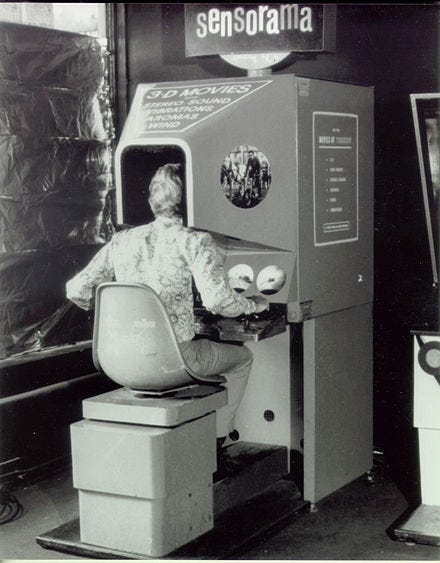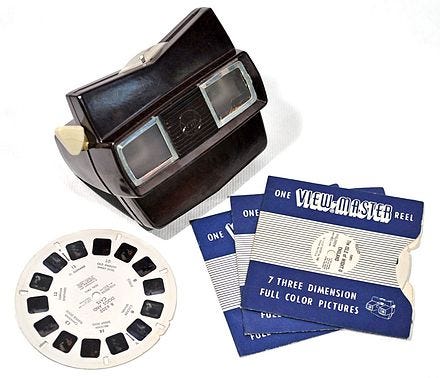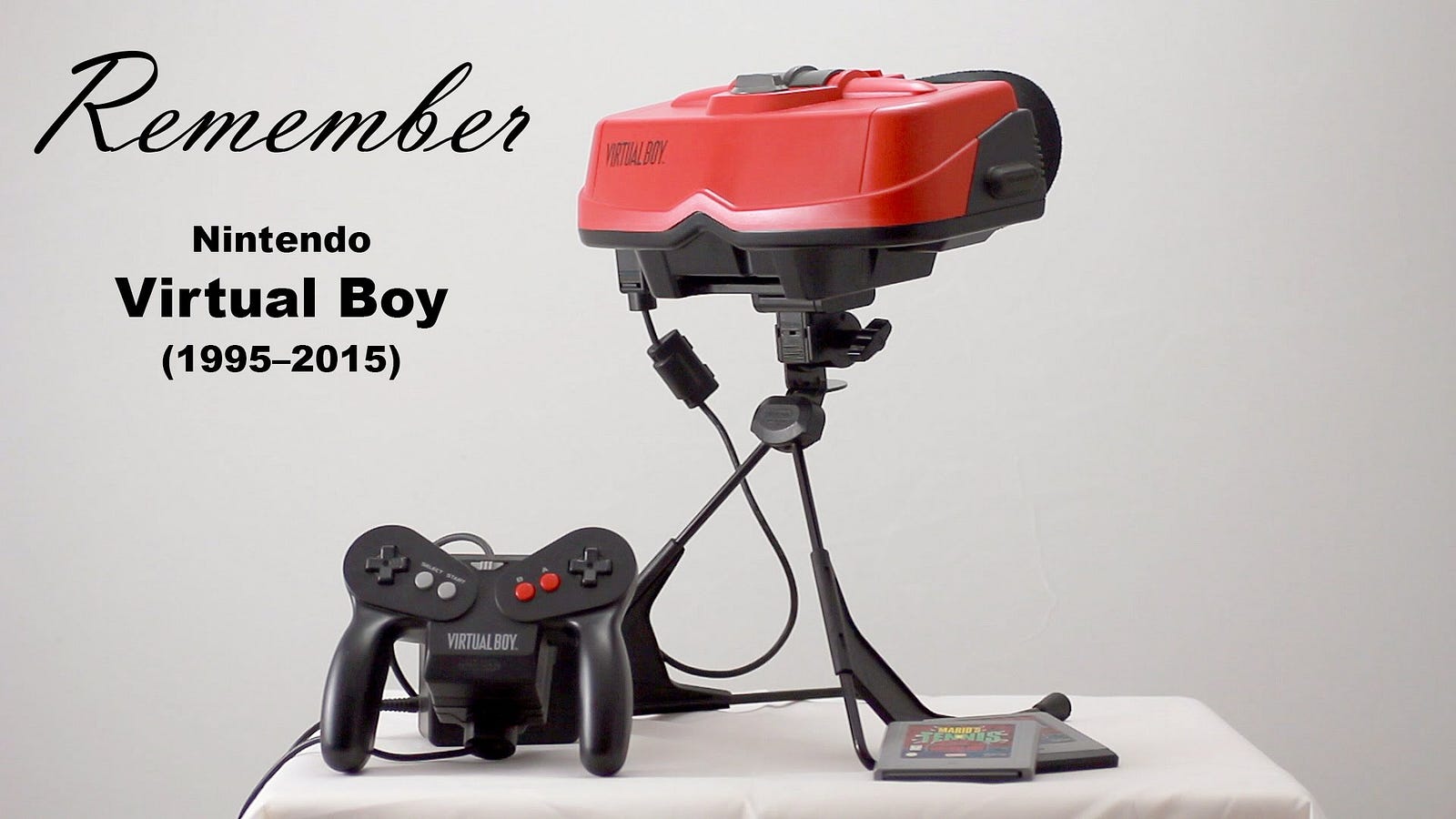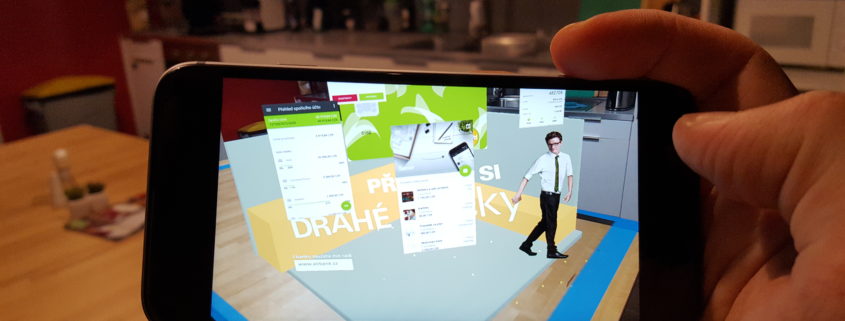Why Should VR-AR Startups Apply to Accelerators in 2018?
Applications are open for StartupYard Batch 9!
Are you a startup, or an entrepreneur with a great Deep Tech idea?
Applications are now open.
Why Should VR-AR Startups Apply to Accelerators in 2018?
VR/AR (Virtual Reality and Augmented Reality), have been around as concepts for a long time. What we might recognize as VR in its modern form dates back, surprisingly, to the 1950s, when the inventor Morton Heilig developed the “Sensorama,” a machine that combined stereoscopic images, binaural sound, and even smell into 5 short films.

Augmented Reality, or AR, has in fact found broader applications in the past few decades. It is common in military applications, and in aviation, where it is used to enhance HUD (Heads Up Displays) with flight data. Today, even some production cars include HUD displays as a safety and ergonomic feature.

Since the 50s, VR has periodically captured the public imagination — notably in the 1990s, when both Sega and Nintendo developed headsets (though Sega’s never reached the market). Even photorealistic 3d simulations were possible by the late 1990s — I tried one myself at the Kennedy Space center nearly 20 years ago. But despite the hype, VR has never taken the mass market by storm.

This post will dive into some of the reasons why not, and why now is probably different.
For the past few years, familiar signs of a resurgence in VR popularity have been growing. What has changed?

Obviously something. StartupYard has received more inquiries from AR/VR and so called “mixed reality” startups during our current open call than in any previous year. In fact, I’ve personally met more VR startup founders in the past 6 months than I had in the past 4 years combined.
Why are VR/AR Startups Applying to StartupYard Now?
This year, we got an influx of applications from startups, all working on AR/VR technologies and applications. We shortlisted several, and eventually accelerated two: Mixed Reality Cloud, and Mindbox. In this post, I’m going to outline a few reasons why I think the AR/VR train is suddenly coming into the station in 2017.
As with any technology, there is not always a perfect correlation between being able to do something, and having a good reason to do it. As we will find in this piece, technologies tend to really explode only when both those conditions are fulfilled.
Thus, here are a few reasons AR/VR is a legitimately big deal for early stage startups in going into 2018:
1. The Smartphone Has Peaked
As Gizmodo noted over a year ago, the massive adoption of smartphone technology has peaked, and is now slowing down as consumers cycle more slowly through technologies that bring fewer noticeable improvements, at a lower rate over time. The release of the iPhone X, for all its technical achievements, underlined the basic premise: the smartphone concept has been fully articulated, and is now undergoing continual refinement.
Smartphones and tablets have ceased to double and redouble their abilities every year, and have begun to be refined into replacements for the traditional desktop computer for many consumers. Already, tablets and phablets have replaced home computers for many consumers. In business, the same trend will likely follow.
This has had a few consequences. First, the core benefits of a smartphone have more or less been fully realized. A typical smartphone can do almost anything you’d want it to do. There is no longer a huge demand for performance improvements, given that even a low-end phone can do so much. The market has become highly differentiated, and every niche has been filled.
Second, as smartphones have become ubiquitous, the businesses built on leveraging them have also achieved scale and begun to saturate the market. As room runs out for smartphone makers to stand out against competitors and justify their higher prices, new use cases must be found or invented. And VR, particularly recently, has been the beneficiary of that pressure.

And…
2. We’ve Hit Peak Mobile
Related but distinct is the peak of the “mobile revolution.” It may be hard to believe, but it was only in 2016 that mobile web browsing overtook desktop browsing for the first time. Today, a majority of human interaction with the internet is done using mobile devices.
Facebook, at the center of that revolution, has grown to over 2 billion active users, but its unprecedented growth of the late 2000s and early 2010s (which was around the time Facebook transformed itself into a mobile-first company) has slowed to a crawl. Not because people are using it less, but because it isrunning out of new people to add to the platform.
As a sign of how mature the mobile market has become, Facebook indicated in 2016 that it would soon run out of space to show people ads on their newsfeeds, prompting the company to begin delving into new experiences in which customers can see and interact with advertisers (such as messaging, and soon, VR).
The mobile revolution brought the age of apps from the Apple App store, Updates from Facebook, Google Maps and the Play Store, and mobile gaming. Mobile gaming alone became more profitable than traditional gaming in 2016.
Again, as with peak smartphone: peak mobile means that mobile software and content developers, along with advertisers, face higher competition and a more saturated market than ever before. Differentiation on mobile has become harder, and so they are actively seeking new media that can provide fertile ground for new content, and new marketing.
And…
3. We Still Need Immersive Experiences — and We Aren’t Getting Them
Gartner noted in their predictions for consumer digital technology in 2017, two very interesting trends. First, that the key upcoming innovations in mobile mostly have to do with AI, IoT (Internet of Things) and ubiquitous computing. Not with consumer applications, but with intelligence and data layers that enrich our lives without necessarily meaning we need to actively engage with them.
And this is backed up by recent hardware developments. Amazon is promoting home computing systems with no physical inputs at all. Apple has just announced the HomePod, which again, proposes to eliminate some use cases for smartphones and televisions, and free up our eyes for looking at, I suppose, other people. I have been told that is what people used to do.
There has been a lot of talk about how the Amazon Echo and other home audio devices are a new medium for advertising, but I’m sceptical of how important that will be in the future. In a technology landscape where more and more of our contact with computers and information is self-directed, and two-way, the nature of advertising and marketing will have to change as well. Perhaps in 5 years a display ad will be a dying relic, and new “marketing AIs” will instead engage directly with individuals to find products that best suit their needs.
At the same time, Gartner predicts that VR, not television, and not tablets or smartphones, will be the leading area of innovation for digital media. So as home computing trends toward becoming less obtrusive, and less all-consuming, at the same time, VR promises to offer a deeper content experience than any medium ever has before.
If smartphones and home computers are going to be less attention-consuming than ever, then where will content creators and marketers go? A good bet is that many will see AR/VR as fertile ground for development. What better medium than somewhere people choose to go to become totally absorbed?
3. People Aren’t Happy with the Status Quo
As smartphones and mobile-first applications have become the core of our experience of media in general, our experience of online content and storytelling has, in some ways, become less impactful. Everything is noise, and nothing is substantial- a feeling you’ve no doubt detected on your Facebook News Feed more than once. Technology has progressed, but it’s failed to deliver experiences people engage with ever more deeply. We may check our phones hundreds of times a day, but do we watch whole movies, read a whole magazine, or play through entire games? Not so much.
And in fact, consumers are not happy with these changes. The ASCI found in its most recent consumer studies, that consumer satisfaction with computer software, smartphones, and social media platforms declined overall in 2017, or failed to make any gains – breaking a decade long trend of increasing satisfaction in these areas.
So we’re getting sick of the status quo. VR can be seen as literally the antidote to checking a smartphone 150+ times a day: a medium that requires your full attention as no other digital media does. And that’s a super attractive prospect, not only to a content creator, but to an advertiser as well.
As the smartphone has evolved, it has at times tried to fill very contradictory roles. It wants to be, by turns, invisible, and very visible: innocuous, and attention getting. We’ve cycled rapidly between smartphones technologies that virtually disappear into the background (like smartwatches), and those that dominate our field of view, like phablets, and even mobile VR headsets. Very often the same companies, like Apple and Samsung, try to sell us both ideas at the same time.
But I am betting that the age of “in-between” experiences is not going to last forever. Ultimately, people want rich content experiences. People still go to cinemas, even though they can download thousands of titles on demand. People still read paper books, even though it rarely makes economic or practical sense anymore. I would bet that VR will join staples of media like the book and the cinema- a technology people use not for convenience, but for the value and depth of the experience.
And…
This is What Big Data Was Always Supposed to Do
StartupYard has been involved with data focused companies from the beginning. But for years, up until just very recently, one of the only ways of turning big data into a business was the same way people had been doing it for generations: selling it to somebody.
Of course, that generated many user-facing applications that enhance people’s lives and make things easier, but at the end of the value chain for most data, there is an advertiser waiting. Facebook, Amazon, and Google have built empires on that assumption, and Apple and Microsoft have made the infrastructure and devices that generate the data, and make it possible to distribute the resulting content, with ads embedded.
Data may still be “the new oil,” as it has become popular to say, but we must remember that as with oil, it took many years, and many fits and starts, to discover its ultimate potential.
Consider the evolution of oil in the modern world. First we burned it, and when that trick got old, we figured out ways of distilling it to make it burn even hotter. Then we figured out that you could use it to make things: chemicals, plastics, synthetic rubber, and other materials.
The innovation with oil wasn’t setting it on fire (we have known oil burns for thousands of years). The innovation was in making novel things out of the oil: fuel, but also tires and even whole cars, smartphones, microchips, and everything in between.
So if Data is the New Oil, then VR may be the new Plastic
VR promises at least one way in which big data will actually translate into novel products that ordinary people can use. Creating artificial environments, or enhancing existing environments with information and interactive elements takes a lot of data. As sensors and data processing platforms have grown in complexity and scale, we are approaching a point at which we can use that scale to be creatively free to make new things.
I have met recently with more than one startup who are counting on that very assumption: that now, unlike ever before, we have enough data about places, objects, physics, and people, to make artificial environments that will be fulfilling to use, and add detail to real environments that will be really useful.
I believe that a century from now, we will view VR as the child of big data — just as we now view the automobile as the child of big oil.
And…
VR Was Inevitable, But Not Always Obvious
There are some technologies that have been so easy to describe, that we’ve known we wanted them since long before they were possible. Powered flight, for example. For centuries, humans understood the benefits of flying, but still, we didn’t have the knowledge or skill to make flight a reality.
And yet other technologies are strangely elusive in that way. The telephone was patented in 1876 by Alexander Graham Bell, who, according to legend, was unable to sell the technology to Western Union for $100,000 because they thought it was a toy.
Despite what we know now about the transformative power of the telephone, it’s surprising to learn that despite the fact that transatlantic telegraph cables existed before the telephone was invented, the first transatlantic telephone call took place over 50 years later, in 1927. And that first phone call from England to the United States happened the same year as Lindberg’s first flight from New York to Paris, only 24 years after the first working airplane was built.
Airplanes were never underestimated, but it took a lot of imagination to picture the way the telephone would transform life as we knew it. Western Union had been right at the beginning: without a dense network of connections to make it truly useful, the telephone was only a novelty. You needed dense telephone networks on both sides of the Atlantic to make a transatlantic call economically viable. Yet when it became commercially viable, the benefits were so obvious that in another 25 years, there was a telephone in literally every house in the developed world.
So while international telephony was inevitable due to its technical advantages, it was not obvious, due to its network dependency.
VR is a lot like that. It’s been not much more than a toy for decades, because the network needed to support its most promising functions hasn’t really existed until recently. How do you generate content? How do you distribute it? These solutions have been long coming, but they have only just begun to make VR an obvious area of growth in the future.
And today, startups are seeing opportunities in the same way that businesses first began to realize the potential of the telephone decades after its invention. A network has been needed, and today, with a world full of smartphones, connected by social networks, and filled with content creators and eager marketers, that time has finally arrived for VR.
Applications are open for StartupYard Batch 9!
Are you a startup, or an entrepreneur with a great Deep Tech idea?
Applications are now open.




